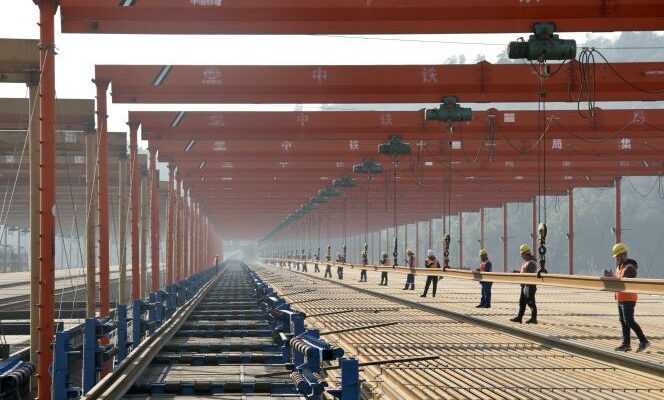Due to the Covid-19, for the third year in a row, Prime Minister Li Keqiang held the press conference on Friday March 11 which closes the annual session of the Chinese Parliament. A sign that the epidemic is not over in China, more than 1,000 positive cases were identified the day before: 1,090 exactly. The figure had never been so high since the confinement of Wuhan, in 2020. On Friday, Changchun, a city of 9 million inhabitants, in the north of the country, was even confined in turn.
Another major uncertainty, of course, is the “Ukrainian crisis”, as the Chinese say. Mostly, “sanctions that will harm the global economy and are in no one’s interest”, explained the prime minister, quicker to criticize Westerners than Russia.
Despite everything, Li Keqiang is convinced: China will be able to achieve growth of“about 5.5%”. A figure that is both low – never in thirty years has Beijing set itself such an unambitious objective – but higher than predicted by international economic institutes. In 2021, the Chinese government had been very cautious and had only bet on growth of 6%, when it had finally reached 8.1%. This year, it’s the opposite. China has decided to show the rest of the world that it remains relatively optimistic. For both political and economic reasons.
A kitty of nearly 200 billion euros
As the Party holds its 20and Congress this fall, the state is explicitly in working order for it to be a success. Its role is to “stabilize the macroeconomic situation, ensure that the economy operates within reasonable margins and maintain the general stability of society. In short, do everything to brilliantly inaugurate the 20and Party Congress, declared the Prime Minister on March 4, opening the parliamentary session. A “whatever it takes” with Chinese characteristics.
“The government will do everything to maintain economic and, consequently, political stability,” explains Willy Lam, an expert from the Jamestown Foundation. In particular by opening wide the floodgates of credit. In 2022, the amount of financial transfers from Beijing to local administrative levels will jump by 18%. A record percentage, to reach the global sum of 9,800 billion yuan (1,410 billion euros). While state spending will increase by 3.9%, Li Keqiang plans to reduce the deficit to 2.8% of gross domestic product (GDP), less than in 2021, while reimbursing SMEs about 1,500 billion yuan of revenue from VAT.
You have 54.96% of this article left to read. The following is for subscribers only.
